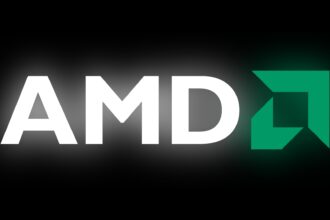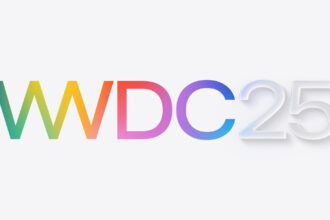Blockchain technology has emerged as a revolutionary force with the potential to transform various industries.
This comprehensive guide aims to provide beginners with an understanding of blockchain and practical insights into utilizing its features.
We will cover the basics of cryptocurrency, smart contracts, and decentralized applications (DApps), this guide serves as a stepping stone for individuals looking to navigate the world of blockchain technology.
Understanding Blockchain Technology
Definition and Core Concepts
Picture a decentralized and secure digital ledger that records transactions. Each transaction forms a block, and these blocks are connected in a chain. It’s like a public ledger that everyone can access and verify.
- Blockchain Architecture
Envision a network of computers (nodes) maintaining this chain of blocks. It’s a distributed system where no single entity has control, enhancing security and trust. - Decentralization and Security
Instead of relying on a central authority, blockchain relies on a decentralized network, making it resistant to tampering and fraud. The security comes from the consensus of the network.
Introduction to Cryptocurrency
What is Cryptocurrency?
Cryptocurrency is digital or virtual currency using cryptography for security. It operates on a blockchain, ensuring secure, transparent, and decentralized transactions.
- How Blockchain Enables Cryptocurrencies
Blockchain acts as the underlying technology, tracking ownership and transactions of cryptocurrencies. It eliminates the need for intermediaries like banks. - Popular Cryptocurrencies and Their Use Cases
Bitcoin and Ethereum are well-known cryptocurrencies. Bitcoin is often used as a digital currency, while Ethereum supports smart contracts, enabling decentralized applications (DApps).
Smart Contracts
What are Smart Contracts?
Smart contracts are self-executing contracts with predefined rules. Imagine programmable contracts that automatically execute when conditions are met.
- How Smart Contracts Work
They run on a blockchain, automatically executing code when triggered by specific events. This automation streamlines processes and eliminates the need for intermediaries. - Use Cases and Advantages of Smart Contracts
Smart contracts find applications in various fields, from financial transactions to supply chain management. Their advantages include transparency, efficiency, and trust.
Decentralized Applications (DApps):
Defining Decentralized Applications
DApps are applications running on a decentralized network. They operate without a single controlling authority, fostering transparency and user control.
- Characteristics and Benefits of DApps
Openness, transparency, and resistance to censorship are hallmarks of DApps. Users have greater control over their data, and the applications operate without central points of failure. - Examples of Successful DApps
Examples include decentralized finance (DeFi) platforms, decentralized exchanges, and blockchain-based social networks, offering users more control over their digital interactions.
Getting Started with Blockchain:
Choosing a Blockchain Platform
Different blockchain platforms cater to various needs. Ethereum, Binance Smart Chain, and others offer distinct features. Choose based on your project requirements.
- Setting Up a Cryptocurrency Wallet
A wallet is essential for managing digital assets. Options include hardware wallets for enhanced security, software wallets, and mobile wallets for convenience. - Obtaining Cryptocurrency and Making Transactions
Acquire cryptocurrency through exchanges, faucets, or mining. Use your wallet to securely make transactions and participate in the blockchain ecosystem.
Creating and Deploying Smart Contracts
Tools for Smart Contract Development
Tools like Solidity (for Ethereum) facilitate smart contract development. Integrated development environments (IDEs) streamline the coding process.
- Writing and Compiling Smart Contracts
Write code for smart contracts, ensuring it aligns with security best practices. Compile the code to a format understandable by the blockchain. - Deploying Smart Contracts on a Blockchain
Deploy the smart contract onto the blockchain, making it accessible to users. Consider factors like gas fees and network congestion during deployment.
Interacting with Decentralized Applications
Accessing DApps Through Web3
Web3.js or similar libraries enable interaction with DApps through web browsers. This allows seamless engagement with decentralized platforms.
- Making Transactions and Interactions
Participate in DApps by making transactions, interacting with smart contracts, and exploring the functionalities offered by blockchain-based applications. - Exploring Different DApp Use Cases
DApps cover a wide range of use cases, from decentralized finance (DeFi) and gaming to identity management. Dive into these applications to experience the decentralized ecosystem.
Blockchain Security Best Practices:
Securing Cryptocurrency Assets
Use hardware wallets for added security. Implement secure storage practices and remain vigilant against phishing attacks to protect your digital assets.
- Avoiding Common Smart Contract Vulnerabilities
Be aware of common vulnerabilities like reentrancy or overflow. Follow best practices, conduct thorough testing, and ensure code security to prevent exploitation. - Privacy Considerations in Blockchain Transactions
Understand privacy challenges in blockchain transactions. Explore privacy-focused alternatives or employ privacy solutions to protect sensitive information.
Future Trends and Developments in Blockchain:
Scaling Solutions for Blockchain Networks
Explore scaling solutions like layer 2 protocols and sharding, addressing the scalability challenges faced by blockchain networks.
- Integration of Blockchain with Emerging Technologies
Witness the integration of blockchain with emerging technologies like artificial intelligence, the Internet of Things (IoT), and 5G, unlocking new possibilities. - Regulatory Landscape and Blockchain Adoption
Stay informed about the evolving regulatory environment governing blockchain and cryptocurrency. Understand the impact on adoption and industry growth.
Staying Informed and Engaging with the Blockchain Community:
Following Blockchain News and Updates
Regularly check reliable sources, websites, forums, and social media channels to stay informed about the latest developments and advancements in the blockchain space.
Participating in Forums and Communities
Engage with the blockchain community by joining forums and social media groups. Share experiences, learn from others, and contribute to discussions.
Continuous Learning and Skill Development
Embrace a mindset of continuous learning. Explore online courses, workshops, and certifications to enhance your blockchain knowledge and skill set.
You now have the tools to explore digital assets, create smart contracts, and engage with decentralized applications. Keep your curiosity high, experiment with new projects, and also get yourself involved with an active blockchain community.














